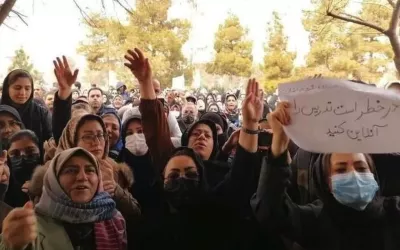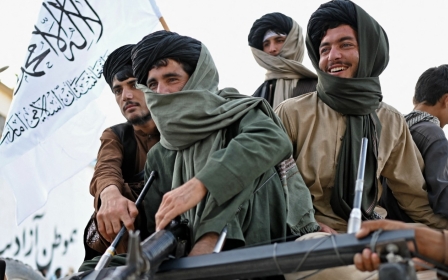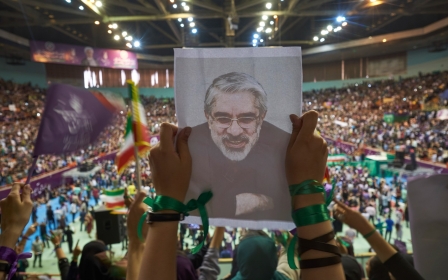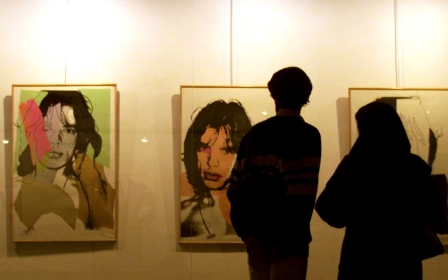Iran’s slow response to schoolgirl 'poisonings' draws suspicion

Ninety-six days after the first reports of schoolgirls being “poisoned” began to emerge in Iran, Supreme Leader Ali Khamenei called on the authorities to “seriously pursue” the issue.
In between, an alleged 5,000 girls in 230 schools across 25 provinces have claimed to have been affected, according to MP Mohammad Hassan Asafari.
So what’s taken the government so long? Many Iranians are wondering exactly that, as cases pile up.
President Ebrahim Raisi’s government isn’t convinced the cases are all that they seem. Though hundreds of girls are reporting symptoms, the interior ministry says “stimulant substances” were found in less than five percent of affected students.
'More than 90 percent of students' expressions of unwellness were caused by anxiety and worries created in the classroom and school environment'
- Interior ministry
"More than 90 percent of students' expressions of unwellness were caused by anxiety and worries created in the classroom and school environment," it claimed on Monday.
New MEE newsletter: Jerusalem Dispatch
Sign up to get the latest insights and analysis on Israel-Palestine, alongside Turkey Unpacked and other MEE newsletters
The same day, the health ministry published its first report after studying the affected girls, concluding that fewer than 10 percent of the cases had any trace of a stimulant, “and the substances that the children came in contact with are not war, nerve or dangerous gases".
The substances found in the girls, the report said, could have been in a powder or dough that evaporates when placed on a heater.
It is noticeable that the government is avoiding using the word “poisoned”, preferring instead to say the students have “felt unwell”. Khamenei, however, appeared to have no qualms using the term.
"This issue is a significant and unforgivable crime, and those who are involved in this incident must be met with severe punishment," he warned.
Public dissatisfaction
While the authorities may argue they are being meticulous in investigating the true nature of the phenomenon, public opinion is increasingly frustrated at the apparently slow progress on apprehending suspects.
Reza, a 34-year-old father and economics graduate, wondered how the authorities can track down on people for small infractions yet are unable to find these perpetrators.
"Many women who do not wear hijab are being summoned and warned, as there are CCTV cameras everywhere. During the protests, the security forces arrested protestors while they were at home, which means they easily use the cameras and other equipment they have to find people,” he told Middle East Eye.
With Iran still feeling the effects of the Mahsa Amini protest movement, which rose up against Iran’s laws on women’s dress and became increasingly anti-establishment, there is a suspicion among some that officials themselves are responsible for the “poisonings”.
“So the question is, how is the Islamic Republic unable to arrest those behind these terrorist attacks? Unless they are doing it themselves?" Reza asked.
These theories hold little weight with a former conservative official.
"I don't think the Islamic Republic is behind this crisis. I believe the slow reaction of the government is rooted in their lack of crisis management. There is no strong leader or manager who can finish the job in this weak government,” he told MEE.
The former official described Raisi and his interior minister, Ahmad Vahidi, as “inept”.
“The latter is a military person and does not know a damn thing about security issues, while he looks at everything militarily," he said, adding that Khamenei’s intervention forced timid officials into acting.
Yet another former official believes otherwise: "To me, the key issue is the government’s three-month silence. That has created speculation about who is behind the attacks.”
The editor-in-chief of an Iranian daily newspaper described the issue as a “big crisis”, which he warned could endanger the ruling establishment.
“There are two hypotheses. First: the government is shocked by the event as there is a radical group that is supportive of the Islamic Republic behind the gas attacks. They don't know what to do with them. I think this is more realistic," he said.
"All these government hesitations could be due to their attempts to get along with the group and stop them gently. I should emphasise that the Islamic Republic is against the attacks, but the attacker is probably its supporter, that's why they are stuck."
“The second hypothesis,” he added, “is that the gas attacks are being done professionally and no trace can be found by the security forces. And probably MEK terrorists could be behind it. However, I don’t think they would be this organised inside Iran.”
Middle East Eye delivers independent and unrivalled coverage and analysis of the Middle East, North Africa and beyond. To learn more about republishing this content and the associated fees, please fill out this form. More about MEE can be found here.





